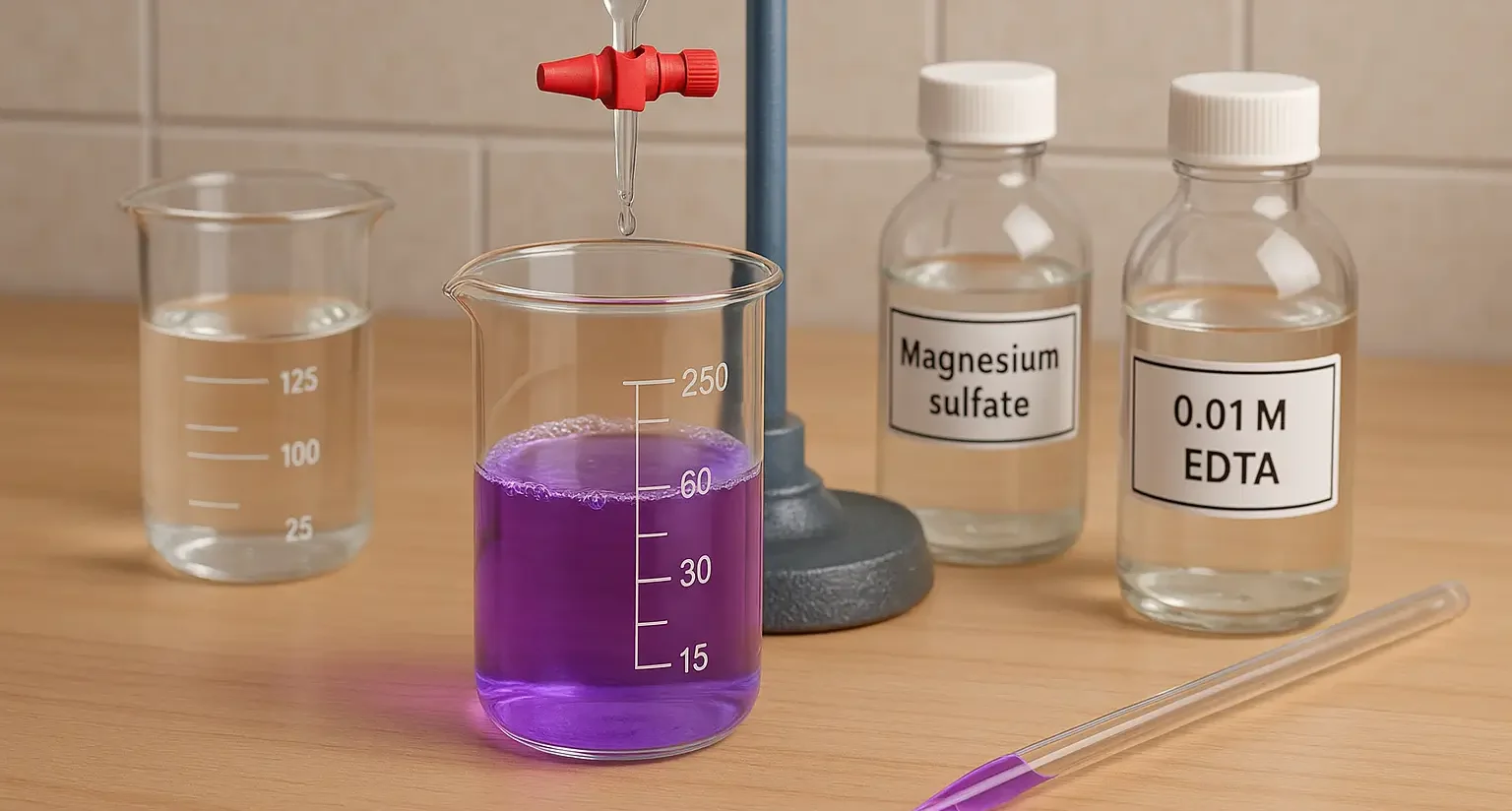Estimations of magnesium sulfate by complexometric titration involves titrating with EDTA using Eriochrome Black T as an indicator to determine magnesium content.
Introduction of Estimation of Magnesium Sulfate by Complexometric Titration:
- Estimation of Magnesium Sulfate by Complexometric Titration In pharmaceutical analysis, the estimations of magnesium sulfate (MgSO₄) is done using complexometric titration with EDTA as the titrant. This method relies on the formation of a stable complex between EDTA and magnesium ions (Mg²⁺).
Apparatus and Reagents:
- Burette
- Erlenmeyer flask
- pH meter or pH indicator
- Magnesium sulfate solution (sample)
- Standard EDTA solution (0.01 M)
- Buffer solution (pH ~10)
- Eriochrome Black T indicator (optional)
Procedure of Estimation of Magnesium Sulfate by Complexometric Titration:
-
Preparation of Sample:
- Weigh a sample of magnesium sulfate, dissolve it in distilled water, and transfer it to an Erlenmeyer flask.
-
Prepare EDTA Solution:
- Use a standard EDTA solution (typically 0.01 M).
-
Buffering:
- Add a buffer solution to the sample to maintain a pH of ~10.
-
Add Indicator (optional):
- If using Eriochrome Black T, add a few drops. The solution will turn pink due to the presence of magnesium ions.
-
Titration:
- Titrate the magnesium sulfate solution with the EDTA solution from the burette.
- As EDTA complexes with Mg²⁺, the solution’s color (pink if using Eriochrome Black T) will remain until all magnesium ions are bound.
-
Endpoint Detection:
- The endpoint is reached when the color changes, typically from pink to blue (if using Eriochrome Black T), or there is a noticeable color change.
-
Record Volume:
- Note the volume of EDTA required to reach the endpoint.
Calculations:
- Amount of MgSO₄ (in grams):
-
- The factor of 2 accounts for the reaction stoichiometry, as each Mg²⁺ ion reacts with one mole of EDTA.
Click Here to Watch the Best Pharma Videos

